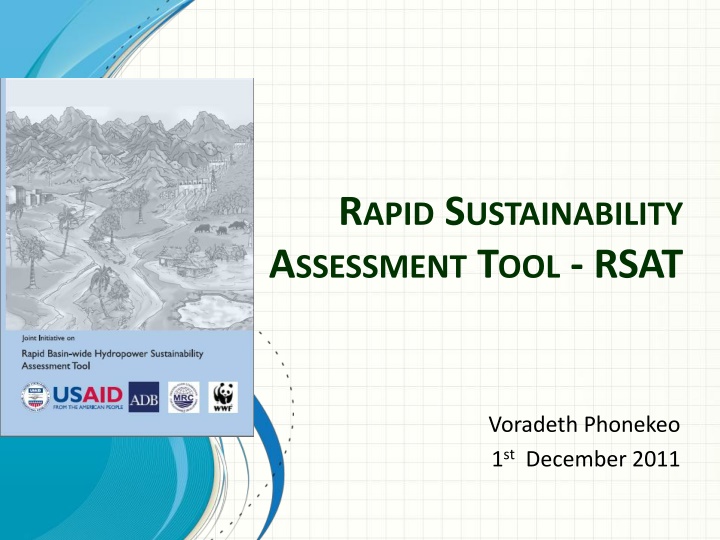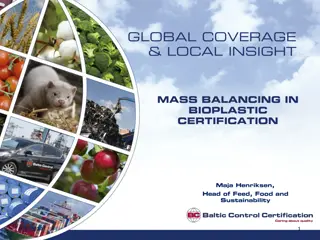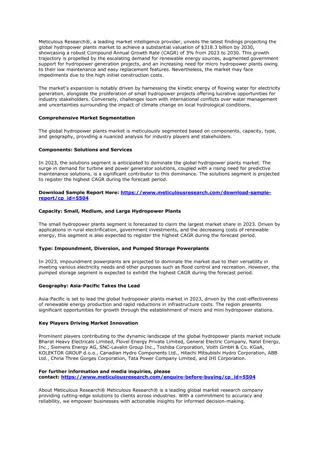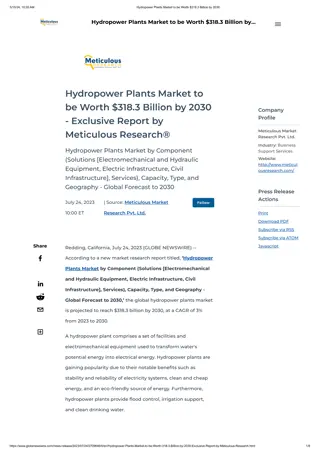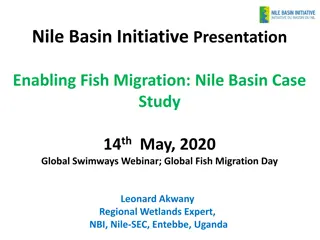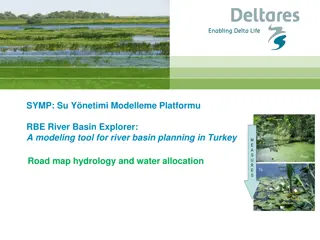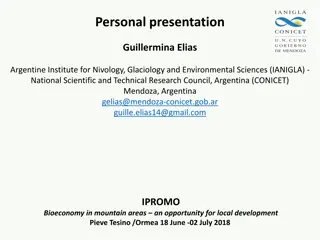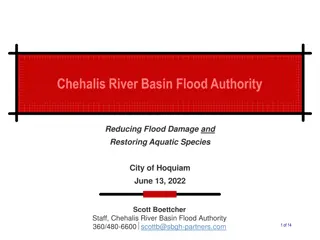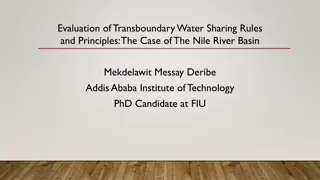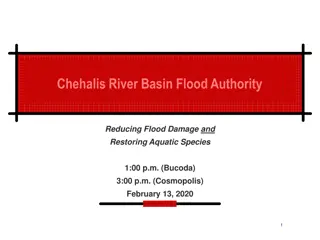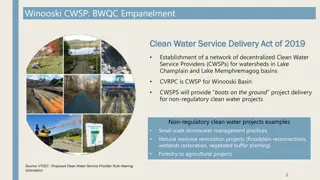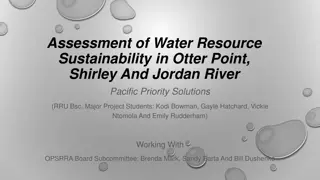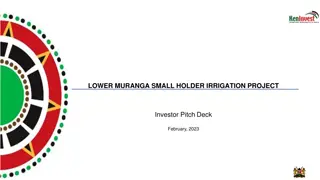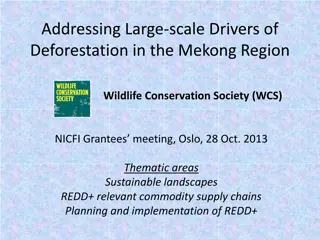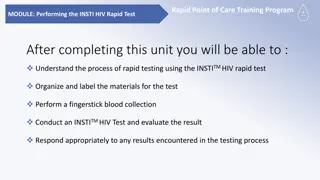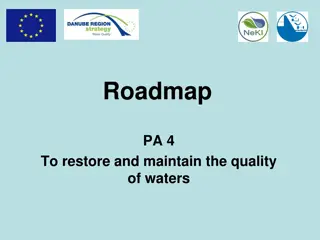Rapid Sustainability Assessment Tool (RSAT) for Hydropower Development in the Mekong River Basin
The Rapid Sustainability Assessment Tool (RSAT) is a methodology designed to assist in sustainable hydropower development in the Mekong River Basin. It utilizes participatory SWOT analysis, multi-stakeholder dialogue, evidence-based scoring, and gap analysis for decision-making. RSAT evaluates single hydropower projects, cascades, sub-basins, and transboundary issues. Key stakeholders include regulatory agencies, hydropower developers, and affected communities. RSAT covers topics such as economic development, environmental quality, and stakeholder engagement to enhance project sustainability.
Download Presentation

Please find below an Image/Link to download the presentation.
The content on the website is provided AS IS for your information and personal use only. It may not be sold, licensed, or shared on other websites without obtaining consent from the author.If you encounter any issues during the download, it is possible that the publisher has removed the file from their server.
You are allowed to download the files provided on this website for personal or commercial use, subject to the condition that they are used lawfully. All files are the property of their respective owners.
The content on the website is provided AS IS for your information and personal use only. It may not be sold, licensed, or shared on other websites without obtaining consent from the author.
E N D
Presentation Transcript
RAPID SUSTAINABILITY ASSESSMENT TOOL - RSAT Voradeth Phonekeo 1stDecember 2011
Aim of today presentation What is RSAT? How might RSAT contribute to improving hydropower quality, actor responsibility and project sustainability? How RSAT can help basin development planning, and RBOs functions?
What is the Rapid Sustainability Assessment Tool (RSAT)? The RSAT is a tool used to assist decision making for sustainable hydropower development in the Mekong River Basin. What methods does it use? Participatory SWOT analysis Multi-stakeholder dialogue Evidence based scoring against criteria Gap analysis Action planning
How might RSAT contribute to improving hydropower quality, project sustainability? The tool is designed to assess: A single hydropower project and its relationship to a sub-basin; Existing and proposed cascades of hydropower projects within a sub-basin or multiple projects within a sub-basin (or 2nd order sub-basin tributary); A sub-basin as a whole that has hydropower potential; and Transboundary issues for basins shared by different countries, where hydropower is already developed or could be developed in future
Key sub- basin stakeholders National regulatory agencies / line agencies Provincial agencies River basin entity (emergent or proxy) Hydropower developers / operators Transboundary and regional institutions Other Stakeholders: Project affected communities and their representatives Potential funding agencies, such as multilateral development banks Key players
11 RSAT Topics 1. Economic development of basin 2. Social and cultural well-being in the basin 3. Environmental quality of the basin 4. Options assessment and alignment with regional plans 5. Co-ordination and optimisation of multiple projects in a basin 6. Environmental flows and downstream regulation 7. Fish passage and fisheries management 8. Benefit sharing and financing sustainability measures 9. Safety and disaster prevention 10. Institutional setting 11. Stakeholder engagement and communication
Topic 1: Hydropower and economic development in the basin / sub-basin Criteria 1.1 Relative contribution of hydropower to national economies 1.2 Relative contribution of hydropower to local economies 1.3: Synergies and trade-offs with other economic sectors in the basin 1.4: Multiple water use optimisation 2.1: Cultural values and non-material uses of resources 2.2 Protection of livelihoods and land and water access rights and entitlements 2.3 Involuntary re-settlement 2.4 Hydropower and equitable social advancement 2.5 Hydropower and poverty reduction 3.1: Understanding and protection of basin-wide ecosystem integrity 2: Hydropower and social and cultural well-being in the basin / sub-basin 3: Hydropower and environmental quality and natural resources management in the basin / sub-basin 3.2: Management of hydropower environmental impacts 3.3: Protection of high value rivers from development 3.4: Hydropower impact on sustainable use of natural resources 3.5 Impact on river morphology, erosion and sedimentation 3.6: Monitoring changes to environmental quality as a result of hydropower 4.1 Options assessment for water and energy services in the basin or export revenue 4.2 Alignment with regional and international agreements, policies / plans and national commitments for basin development 4.3 Alignment with integrated water resource management (IWRM) planning in the basin 4: Options assessment and alignment with national, regional and international agreements, policies and plans
5. Site selection and optimisation, sequencing and multi project co-ordination 5.1 Multi-criteria assessment for site selection and optimisation for multiple projects in a basin or cascade 5.2 Protection of unique biodiversity / habitat and culturally significant sites in hydropower site selection and design 5.3 Co-ordination of planning for hydropower implementation in a basin with multiple objectives 5.4 Co-ordination of planning for operations within a system of multiple reservoirs or cascade 6: Environmental flows and downstream regulation 6.1: Environmental flow assessment (EFA) 6.2: Structural provision and operational procedures for sediment management and sediment flushing during all project stages 6.3 Structural provision and operational procedures for downstream flow regulation including transboundary considerations 6.4 Maintaining the flow of nutrient rich silt 6.5 Flood and drought management and floodplain protection 6.6 River transport and navigation locks 7.1 Understanding and monitoring of fisheries resources 7.2 Policy, regulations and practices for fish management in hydropower 7. Fish passage and fisheries management 7.3 Structural and operational provision for fish passage 7.4 Protection of upstream and downstream fisheries and development of reservoir fisheries
Topic 8: Sharing of benefits and use of innovative financing measures for sustainability (local and transboundary) Criteria 8.1 Sharing of project benefits 8.2 Equitable water resource allocation between sectors and countries 8.3 Payment for ecological services (PES) 8.4 Carbon financing opportunities to fund sustainability measures 8.5 Project revenue to fund sustainability measures 9.1 Dam safety management system (DSMS) 9.2 Consistency across basin / cascade 9.3: Emergency preparedness plans (EPP) and co-ordination 9.4: Dam break and other analysis prepared for projects in cascades 9.5: Emergency flood management 10.1 Sustainable hydropower roles and allocation of responsibility 10.2 Co-ordination mechanisms between key stakeholders 10.3 Transboundary notification, conflict resolution and communication 9: Provision for safety and disaster prevention and management 10: National and basin-wide institutional setting 10.4 Monitoring, review and compliance provisions 10.5: Sustainability principles in hydropower agreements 10.6: Capacity building plans for key agencies and River Basin Organisations and Committees (RBO / RBC) 11.1 Strategic communication and awareness of sustainable hydropower principles and practices 11.2: Informed participation and representation in hydropower decision making at all stages of the project cycle 11.3 Information sharing and access to data and reports 11.4: Basin level community support for hydropower 11.5 Integration of operations in watershed / catchment management 11: Communication, basin stakeholder and community involvement and support for hydropower development
RSAT Case Studies 3S Rivers Basin Developing transboundary IWRM Cascade of 7 dams in river basin (Lao PDR) Scoping for CIA Designing watershed management strategy Nam Ngum river basin (Lao PDR) Dialogue for the RBC Sre Pok river basin Upper Vietnam Lower Cambodia EIA guidance Nam Kam Nam Ngum 3S Basin (transboundary) Sre Pok Upper and Lower
Example of RSAT analysis - Nam Ngum River Basin Used RSAT to identify priority actions for River Basin Committee Multi-stakeholder assessment team provincial agencies multi-sectoral hydropower developers Actions SWOT analysis Sustainability Scoring Identification of priority actions for RBC Outcomes: Developed understanding of sustainability issues for hydropower development in NN Build relationships between sectors involved in NN RBC Priority actions identified for NN RBC
RSAT can be downloaded at: http://www.mrcmekong.org/news-and-events/news/innovative-tool-for-mekong-basin-wide-sustainable- hydropower-assessment-launched/
